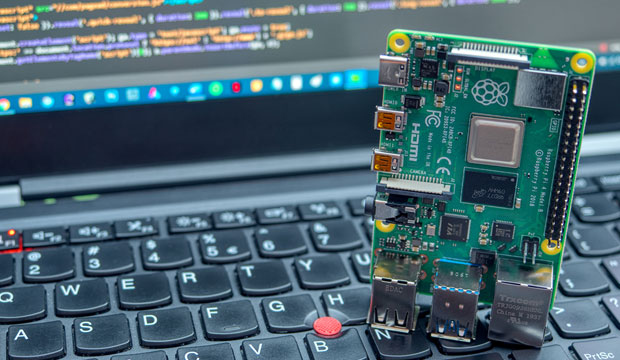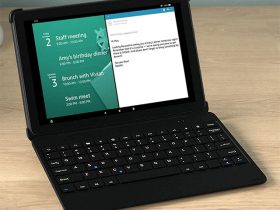Despite being a beloved companion to pc hobbyists the world over, the Raspberry Pi doesn’t get sufficient credit score. The truth is, single-board computer systems of all stripes haven’t gotten their due — I simply occur to have a Raspberry Pi. It was upon casting a stray look into the nook of my room the place my Pi is, churning away on the earlier process I assigned it, that I contemplated all of the loftier tasks I take into consideration for it.
It can most likely be some time earlier than I sort out these grand designs. However the subsequent smartest thing to following my desires is to share them. The concepts listed below are charcoal sketches, not full illustrations, however they yield a tough image.
I must also be aware that these tasks all include Linux of their blueprints (stunning, I do know). As that is the preliminary stage, we will depart the precise distribution clean for now. You possibly can safely belief, although, that any providers we’d want our Pi to run will fasten flush onto a Linux base.
You Can’t Telephone Dwelling if You Don’t Have the Quantity
Two of the three tasks under would require server configuration — and since servers are most helpful when accessible on the broader Web, this additionally entails some community tinkering. Particularly, everytime you need to attain your personal personal community from the surface, you will have to nail down the IP tackle and ports on the Web-facing facet.
First, work out what your IP tackle is and whether or not it’s dynamic or static on the vast space community (WAN). For our functions, deal with our WAN because the Web. In case your WAN IP is static, nice. It can at all times be the identical (so long as you pay your ISP on time), so you can begin engaged on ports.
Nonetheless, in case your WAN IP is dynamic, which means it modifications periodically, there are further steps. You have to to register a website for it, after which get the worldwide DNS infrastructure to honor that. Straightforward! In a nutshell, this entails registering a website, such as you would for a web site, however setting it to your own home’s WAN IP tackle.
But when your WAN IP tackle always modifications how does this remedy something?
With a particular DNS entry known as Dynamic DNS (DDNS), when you affiliate your router together with your area, it’ll mechanically replace itself as your router’s WAN IP modifications. This fashion, your area will at all times level to no matter WAN IP is at present assigned to your router.
While you need to entry your LAN from the Web, as a substitute of getting into an IP tackle you’ll enter your area. DNS then resolves it to your WAN IP, and also you’re all set. Any additional element is past the scope of this text, however that’s the gist.
Irrespective of which IP journey you selected, you then must resolve what ports to open in your router’s WAN IP. If we liken IP addresses to postal addresses, consider ports as unit numbers. Principally, your Pi will sit in your community with its service opening up whichever of its personal ports it wants, and your router will map that Pi port to one of many router’s WAN-facing ports. In the event you hit the fitting port in your WAN IP (the router), your router will move the visitors to your Pi, on its related port, on the LAN. Appropriately sufficient, that is known as “port mapping” or “port forwarding.”
For instance, think about your router is 5.6.7.8 on the WAN. Let’s say your router’s LAN IP is 192.168.1.1 and your Pi’s LAN IP is 192.168.1.37. In the event you wished to SSH into your Pi from anyplace on the planet, you’ll set port 22 on 192.168.1.37 to be open as regular. Your router would then map port 22 on 192.168.1.37 to (as an illustration) port 2222 on its WAN IP, 5.6.7.8.
Once more, there’s much more to it, however that’s primarily how community configuration in your Pi goes.
To the Drawing Board
With our prep work out of the way in which, let’s prepare dinner up some Pi recipes.
1. VPN Server
On the high of my checklist of Pi experiments is making a VPN server. Why pay for a cloud VPN when you’ll be able to tunnel house at no cost? Most of us depart our greatest stuff, bodily and digital, at house anyway. When you punch into your own home VPN, you’ll be able to entry media recordsdata, backups, or anything squirreled in your LAN.
On this association, your Pi is the VPN server, and the end-user units you need to connect with it, e.g. laptops or cellular units, are the shoppers. Your Pi resides in your LAN, together with your router mapping the Pi VPN port to a port on its WAN IP. Dial your own home’s IP and port, current the required key, and you’ll open an encrypted line again to house base.
2. Clear VPN Proxy
This undertaking is exclusive as a result of it doesn’t present a service (and so isn’t a server), nevertheless it facilitates using an present service. When transformed to a clear VPN proxy, your Pi turns into a transportable safety machine that mechanically confers VPN safety in your different units.
To construct your clear proxy, first you will have to make sure that your Pi has two wi-fi interfaces. Pi fashions include, at most, one wi-fi interface, so that you’ll have to select up a minimum of one USB-connected wi-fi machine. Second, you’ll want a VPN service. In case your VPN was the server described above, I suppose you’ll want one other Pi.
A clear VPN proxy is designed to unravel the issue of not trusting a community sufficient to attach your end-user units on to it, however nonetheless needing connectivity. In essence, the proxy machine does so by interposing itself between the untrusted community and end-user machine, after which routes the end-user machine by your VPN of alternative. This leaves the untrusted community carrying purely encrypted visitors.
To drag this off, you configure your Pi as an entry level (AP) and as a VPN consumer. What’s it an AP for? The suspect community. Its function as a VPN consumer works as you’ll count on, with its visitors encrypted to the VPN server.
The attention-grabbing stuff occurs when your end-user machine connects to the Pi AP. As a result of the Pi’s visitors is the end-user machine’s visitors (as with typical APs), and the Pi’s visitors can also be encrypted, your end-user machine visitors is transitively encrypted. However you get that encryption with out altering any settings on the end-user machine. Your laptop computer or cellular machine simply thinks it’s on a standard community. Even higher, at no level has it ever interacted with the sketchy community. Neat trick, huh?
3. File Storage Server
We’re again to server mode right here, so the networking stipulations are again in drive.
A Pi file storage server can stand in for cloud storage whereas providing added perks. The final idea is that, like with the VPN, it lives in your LAN with its file service port mapped to a port in your router’s WAN IP. You then entry the file server by punching in your house router’s IP and port, plus the server username and password, into your community storage consumer program and also you throw open your vault of stashed recordsdata.
The benefits of operating your personal networked file storage are substantial. For one factor, you’ll be able to retailer far more knowledge. Need extra space? Connect a much bigger laborious drive. For one more, you personal the infrastructure. You’re not entrusting your knowledge to some firm, however to your personal {hardware} and open-source software program — and it prices a lot much less. You actually solely sink one-time prices into the Pi and laborious drive, and simply pay for electrical energy.
On Your Mark, Get Set, Boot!
These aren’t even all of the schemes I’ve concocted for my Pi, however they’re those I’m most enthusiastic about and that I assumed others would possibly discover most intriguing. You’ll undoubtedly know after I get round to those, since I’m sure to share my findings. Till then, I hope these offer you raspberry-flavored meals for thought.
,







